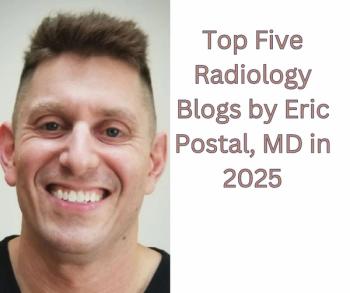
Gadolinium Unnecessary for Most Pediatric Solid Tumors
Children undergoing integrated PET/MRI for solid tumor diagnosis likely do not need gadolinium contrast.
Gadolinium chelate contrast is not needed when using 18F-FDG PET/MRI to diagnose most solid pediatric malignancies, with the possible exception of focal liver lesions, according to a study published in the
Researchers from Stanford University in California sought to evaluate whether administration of gadolinium chelates was necessary for evaluation of pediatric tumors. A total of 119 children were included in the study, 66 boys and 53 girls, with a mean age of 8.1. All underwent contrast-enhanced MRI between 2005 and 2013; 103 patients had primary tumors. The remaining children had lymph node, bone, and/or liver metastases. All were followed for a minimum of one year.
A subset of 36 children also underwent 18F-FDG PET within three weeks of undergoing MRI, without treatment between the two tests. The researchers fused the PET images with the unenhanced T2-weighted MR images (unenhanced 18F-FDG PET/MRI) and the enhanced T1-weighted MR images (enhanced 18F-FDG PET/MRI).[[{"type":"media","view_mode":"media_crop","fid":"45247","attributes":{"alt":"contrast","class":"media-image media-image-right","id":"media_crop_8526474472843","media_crop_h":"0","media_crop_image_style":"-1","media_crop_instance":"5160","media_crop_rotate":"0","media_crop_scale_h":"0","media_crop_scale_w":"0","media_crop_w":"0","media_crop_x":"0","media_crop_y":"0","style":"height: 105px; width: 170px; border-width: 0px; border-style: solid; margin: 1px; float: right;","title":"©sfam photo/Shutterstock.com","typeof":"foaf:Image"}}]]
The results showed no significant difference in diagnostic accuracy between the unenhanced and enhanced MR images, nor any significant differences in diagnostic accuracy between the unenhanced and enhanced 18F-FDG PET/MR images.
“18F-FDG avidity and gadolinium chelate enhancement were concordant in 30 of the 36 patients and 106 of their 123 tumors,” the authors wrote. “Gadolinium chelate administration is not necessary for accurate diagnostic characterization of most solid pediatric malignancies on 18F-FDG PET/MR images, with the possible exception of focal liver lesions,” they concluded.
Newsletter
Stay at the forefront of radiology with the Diagnostic Imaging newsletter, delivering the latest news, clinical insights, and imaging advancements for today’s radiologists.




























